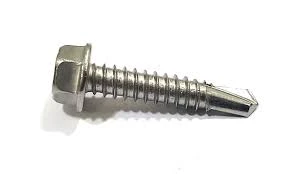structural steel bolts and nuts
Understanding Structural Steel Bolts and Nuts Key Components for Stability and Safety
Structural steel bolts and nuts play a pivotal role in the construction and engineering industries, serving as critical components that ensure the integrity and stability of a variety of structures. From bridges and skyscrapers to pipelines and machinery, the proper selection, installation, and maintenance of these fasteners are essential to the overall performance and safety of a structure.
The Importance of Structural Steel Fasteners
Bolts and nuts are mechanical fasteners used to join parts together in a secure manner. In structural applications, they must withstand significant loads and stresses. The reliability of a construction project heavily depends on the quality of materials used, and structural steel bolts and nuts are typically made from high-strength steel alloys specifically designed to handle the demands placed on them.
The primary function of structural bolts is to provide a clamping force between two or more components. This clamping force is generated by the tension applied to the bolt when it is tightened, which compresses the joined elements together. The nuts work in conjunction with the bolts, allowing for adjustment and secure retention of the bolted connection.
Types of Structural Bolts
There are several types of structural bolts, each designed for specific applications
1. Heavy Hex Bolts These are commonly used in steel structures due to their strength and ability to bear heavy loads. Their large diameter and hexagonal head make them easy to install and remove.
2. A325 and A490 Bolts These are high-strength bolts specified by the American Institute of Steel Construction (AISC). A325 bolts are often used in structural steel connections, while A490 bolts are typically employed in high-strength applications.
3. Tension-Controlled Bolts These bolts come with a built-in mechanism that allows for the precise application of tension during installation. This feature helps to ensure the strength and reliability of the connection.
4. Lag Bolts and Carriage Bolts While not as common in structural applications as heavy hex bolts, these types can be found in various settings where specific fastening needs arise.
structural steel bolts and nuts

Essential Considerations When Selecting Bolts and Nuts
When selecting structural steel bolts and nuts, several key factors must be considered
- Material Strength It is crucial to choose materials that meet or exceed the required tensile and shear strength for the specific application.
- Corrosion Resistance Structural elements may be exposed to harsh environmental conditions. Choosing coated or stainless steel bolts and nuts can help prevent corrosion and prolong the lifespan of the fasteners.
- Size and Threading The diameter, length, and type of threading must match the design requirements of the project. Proper sizing ensures optimal load distribution and minimizes the risk of failure.
- Installation Method Some applications may require specific installation techniques, such as pre-tensioning, which can influence the type of bolt used.
Installation and Maintenance
Proper installation is critical to the performance of structural bolts and nuts. It is essential to follow specified torque values during installation to achieve the desired clamping force. Additionally, regular inspections should be conducted to identify any signs of wear, corrosion, or loosening of the bolts and nuts. If any issues are detected, timely repairs or replacements should be carried out to maintain structural integrity.
Conclusion
In the realm of construction and engineering, structural steel bolts and nuts are indispensable components that uphold the safety and stability of structures. Understanding their types, selection criteria, and installation methods can significantly impact the longevity and performance of construction projects. By prioritizing quality and following best practices, engineers and construction professionals can ensure that their buildings, bridges, and other structures remain robust and safe for years to come. It is through careful consideration of these crucial fasteners that the foundations of our modern infrastructure are secured.
-
Weatherproof Plastic Expansion Anchors for OutdoorNewsJun.06,2025
-
Sustainability in the Supply Chain: Eco-Friendly TEK Screws ProductionNewsJun.06,2025
-
Load-Bearing Capacity of External Insulation FixingsNewsJun.06,2025
-
Double Head Bolts: Enhancing Efficiency in Industrial MachineryNewsJun.06,2025
-
Corrosion Resistance in Chipboard Screws: Coatings for Wholesale DurabilityNewsJun.06,2025
-
Butterfly Toggle Bolts : Enhancing Structural ResilienceNewsJun.06,2025
